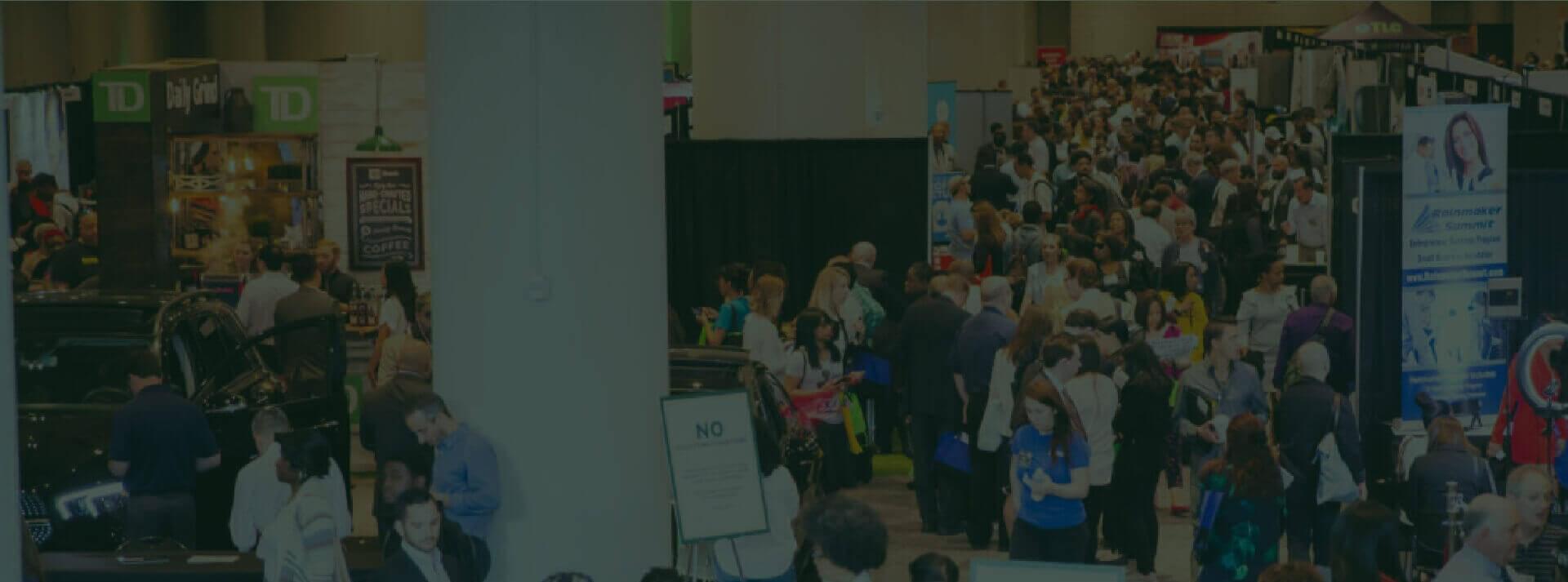
Summary: Mastering face-to-face conversation is key to building authentic connections at events, boosting trust and conversions. Learn how to identify gatekeepers, connect with decision-makers, and leverage tools like registration lists, lead scanners, and drip campaigns to improve networking outcomes and event ROI.
Face-to-face communication is powerful. It lends you tools like body language, tone and pitch, and eye contact. When you share space, laughter, and small talk, you’re more likely to reach, connect with, and persuade your prospective leads.
More crucially, event attendees are more likely to trust face-to-face communication than email communication. Genuine connection significantly boosts their potential to convert.
Success begins with mastering the art of conversation. Creating connections is about more than charisma, however. You must understand how to recognize key decision-makers and leverage tools to keep the conversation going.
In this chapter, we’ll share the tips and tricks that successful exhibitors use when networking at events. Continue reading to learn how to build authentic connections on the floor and boost your ROI.
The Importance of Conversation in Networking with Event Attendees
The #1 mistake that first-time event exhibitors make is arriving with a perfectly memorized elevator pitch. While you must know your product, it’s far more important to know how to have a conversation.
Remember, at many events, you’ll be meeting with other business owners. They can recognize a sales pitch when they hear one. Before they’re ready to hear about what you’re selling, they’ll want to be sure you’re someone they can trust.
Humans crave authenticity and respond to vulnerability. The goal of successful communication is mutual understanding. It makes an environment feel safe and transparent. Rather than selling a product, offer a solution to a genuine pain point.
Here are a few tips on ensuring you’re creating connections grounded in authenticity:
- Leverage non-verbal cues. Take some time to notice your default body language. Humans tend to mirror one another to demonstrate empathy. Open, confident body language will result in more engagement. Likewise, mirroring someone else’s body language can help them feel seen and understood.
- Ask questions. Asking questions demonstrates curiosity and allows your conversation partner to begin with a topic they know well. Ensure the questions require more than a yes or no answer, allowing you to build rapport.
- Use active listening. Make eye contact, indicate understanding through gestures, and try not to interrupt. Paraphrasing what a speaker has said can clarify what you heard and make them feel understood. Aim for honesty in responses, and ask appropriate follow-up questions rather than pushing an agenda.
Know Your Attendees: Identifying Gatekeepers vs. Decision Makers
The value of building connections upfront is that you’ll be able to identify gatekeepers and decision-makers quickly. Knowing who you’re speaking to can help you tailor your approach to the conversation.
Gatekeepers are those sent to a trade show, conference, or expo to gather information. They do not typically have decision-making power. They are likely reporting their findings and opinions on your solution to someone higher up. These are the individuals who will connect you to decision-makers.
Decision-makers are those who actually have purchasing power. These are your highest-value contacts. These individuals ultimately determine if they will convert. However, it’s rare to get the decision-makers themselves to participate in your demo.
Here are our top tips for connecting with decision-makers, even when faced with a gatekeeper first:
- Start with pain points. No matter who the point of contact is, make it clear that you have the solution to their problem. Engage them in conversation about their problem and meet them with empathy. If you’re at the appropriate expo, your industry expertise will go a long way toward building trust.
- Ask about their process. It’s perfectly fair to ask about the decision-making process up-front. For many gatekeepers, this transparency is a refreshing change of pace that leads to more vulnerability and authenticity.
- Aim to align. Don’t think of the gatekeeper as an obstacle. Instead, they should be a resource who can give you the information you need to reach the decision-maker. Aim to make them an ally through authentic conversation.
In essence, treat everyone you encounter as though they are the CEO of the company. If they remember you for the right reasons, your message will get through.

Networking Tools & Strategies for Exhibitors
Here are the top tools and strategies to employ before, during, and after you attend an expo.
Before: Leverage Pre-Event Registration Lists
The art of conversation begins with preparation. Often, you’ll have access to pre-event registration lists. Using this information, you can identify strong leads out of the gate and even do some research on their needs.
During: Use a Lead Scanner
Once you’re there, consider using a lead scanner or lead capture tool. Small, handheld devices can help streamline and even automate the process of following up with attendees after the conference. They’ll capture contact information and even provide an opportunity to make notes on each one.
These notes are valuable when reaching out with personalized follow-up messages that address their unique pain points.
After: Begin a Drip Campaign
Once you’ve captured and segmented your leads, you can follow up with a lead-nurturing newsletter or email workflow. These are sometimes known as drip campaigns. They can help maintain relationships and keep your solution at top-of-mind.
Be incredibly thoughtful about the call to action you include in such communication. Encourage an introduction to the key decision-makers if you haven’t already met them. Consider encouraging leads to schedule a call or another demo.
Remember, emails and other outreach are still forms of communication. Event attendees are still seeking authenticity, not sales tactics. Ensure every message is segmented to address the recipient’s needs and provide some value.
Connect With Attendees at The Small Business Expo
Are you ready to put your new communication skills to work? Discover our powerful lead generation and B2B marketing. Connect with attendees who are actively seeking your solutions and amplify your event ROI.
